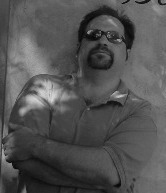From the Ninth Circuit Blog
Case o' The Week: Supremes Get Confrontational With Ninth: Norwood and the Confrontation Clause
 In 2009, the defense in Norwood argued that an affidavit created by a state-employee for trial, and introduced without her testimony, was testimonial hearsay barred by Crawford and the Confrontation Clause.
In 2009, the defense in Norwood argued that an affidavit created by a state-employee for trial, and introduced without her testimony, was testimonial hearsay barred by Crawford and the Confrontation Clause."You're wrong," countered the Ninth.
"You're wrong," trumped the Supremes. The Supreme Court granted Norwood's petition for cert., vacated, and remanded the Ninth's first Norwood decision. On remand, the Ninth (and the government) now finally concede that Crawford applies to a broader scope of hearsay. A victory for the Confrontation Clause (though a "harmless error" loss for Mr. Norwood). United States v. Norwood, 2919 WL 537497 (9th Cir. Feb. 17, 2010), decision available here.
Players: Decision by Judge M. Smith (above left), joined by Judge Tallman and visiting Judge Reavley.
Facts: After responding to a domestic violence call police found Norwood lying in bed, the smell of marijuana in the air. Id. at *1. A search of Norwood revealed .86 grams of crack and over $2,500; a later search of his home and car turned up another $7,000 in cash (in duct-taped $1k bundles), 7+ grams of crack, a digital scale with residue, marijuana, and a gun. Id.
Norwood went to trial on crack and § 924(c) charges. Id. At trial, the government introduced an affidavit by a state employee claiming there were no wage records for Norwood. Id. “[T]he court admitted her affidavit as circumstantial evidence that Norwood had no legal source for the large amounts of cash that were found on his person and in his car.” Id. at *2.
The Ninth upheld the conviction. See 555 F.3d 1061 (9th Cir. 2009). The Supreme Court granted, vacated, and remanded the Ninth’s opinion in light of its decision in Melendez-Diaz v. Massachusetts, 129 S. Ct 2527 (2009). The Norwood case discussed in this memo is the Ninth’s decision on remand.
Issue(s): “Norwood alleges that his Sixth Amendment right to confront his accusers was violated when the district court admitted into evidence a written affidavit without requiring the affiant to testify on the stand.” Id. at *2.
Held: “[T]he government concedes that under Melendez-Diaz, [the] affidavit, prepared for use at Norwood’s trial to prove the absence of any record of Norwood having legitimate employment, should not have been admitted without [the employee] presenting herself at trial for examination.” Id. at *3.
[However,] disregarding the affidavit entirely, the evidence against Norwood on the elements of the offense of possession of cocaine base with intent to distribute was sufficient to establish his guilt beyond any reasonable doubt.” Id. at *4. (Therefore, this was harmless error).
Of Note: While Norwood is primarily a Confrontation Clause case, it also unfortunately contributes to the factual morass of § 924(c) law. Here, although Norwood didn’t have the gun (it was hidden in the bed), and although there were very small amounts of drugs, and while there was not much trafficking-paraphernalia, the Ninth stretches earlier § 924(c) analyses to salvage the conviction. Id. at *7 (discussing Krouse). Beware of Norwood when crafting your Rule 29 motions in Section 924(c) cases.
How to Use: One spin-off of the 2004 Crawford decision is litigation over what is – and isn’t – a “business record” exempt from the ban on “testimonial” hearsay. In the original decision, the Ninth tried to patch up the affidavit as a “business record” (which is exempt from the Crawford rule): the Supremes didn’t buy it and reversed. Recall that the (hearsay) lab analyses in the Supreme Court’s Melendez-Diaz decision didn’t cut Crawford muster. From that holding it is clear that the state-employee affidavit used in Norwood was also “testimonial” and prohibited.
After Crawford, Melendez-Diaz, and Norwood, when the government starts cramming hearsay into the business record exception defense antennae should start quivering. See generally United States v. Ray, 930 F.2d 1368, 1370 (9th Cir. 1990) (discussing Fed. R. Evid. 803(6) and foundation requirements for business record exception).
For Further Reading: “Nada. Gar nichts. Rien du tout. Bupkes.” 2010 WL 548042, *1 (9th Cir. Feb. 18, 2010) (dissent from ord. denying rehearing en banc).
That’s Chief Judge Kozinski describing how many circuits (outside of the Ninth) have approved a police invasion of a home based on no showing whatsoever. Read Judge Kozinski’s funny, persuasive, and infuriating dissent from the denial of rehearing en banc in Lemus (decision available here). He laments the death of the Fourth Amendment protections in the home in the Ninth; a dissent joined, remarkably, only by Judge Paez. Where are all the lefties (and individual-rights conservatives) when the C.J. sounds the Fourth alarm?
Image of the Hon. M. Smith from http://blog.oregonlive.com/mapesonpolitics/2008/07/this_smith_brother_made_the_di.html
Steven Kalar, Senior Litigator N.D. Cal. FPD. Website at www.ndcalfpd.org
.
Labels: Business Records, Confrontation Clause, Crawford, Kozinski, Milan Smith, Section 924(c)

0 Comments:
Post a Comment
<< Home